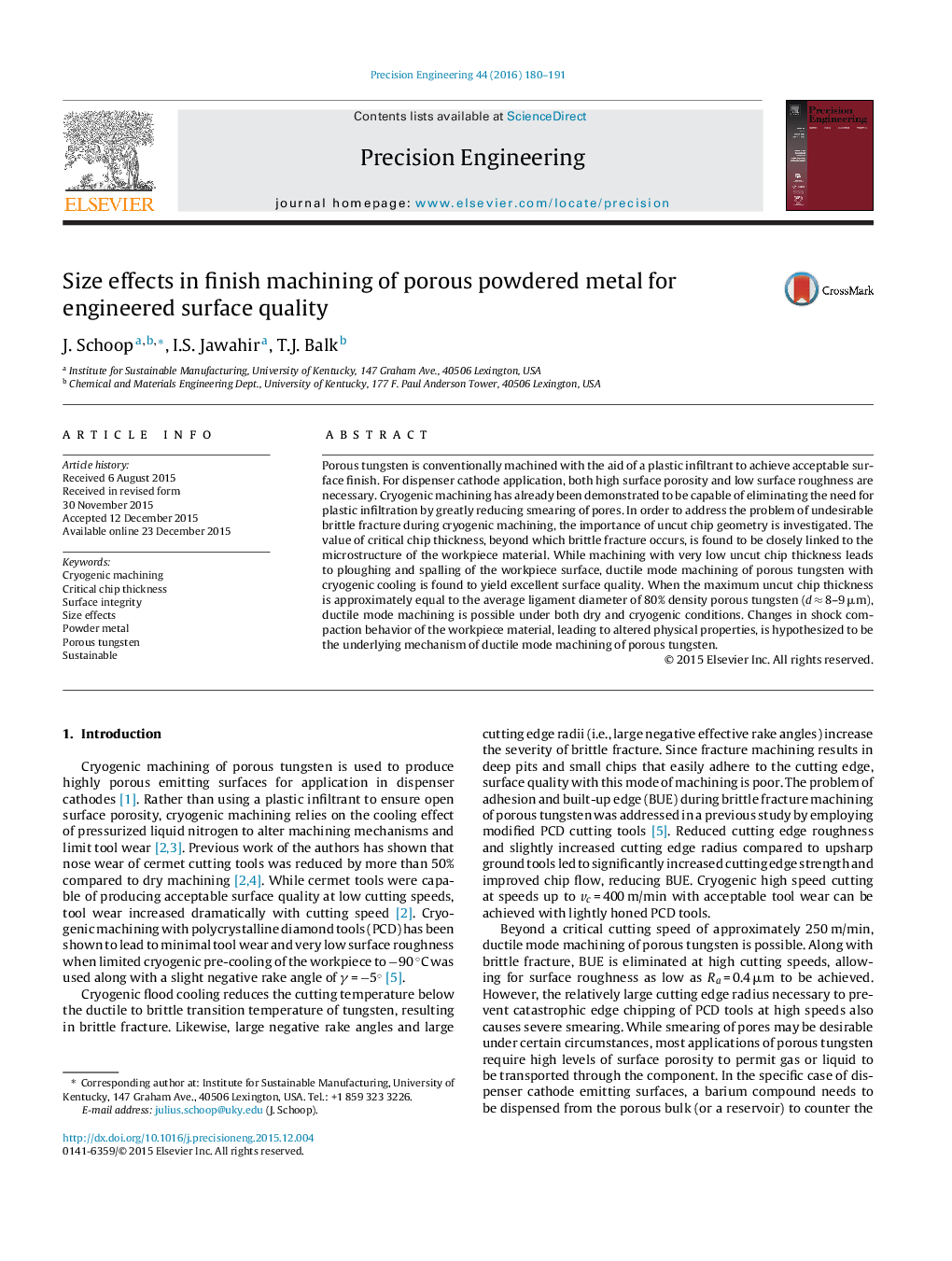| Article ID | Journal | Published Year | Pages | File Type |
|---|---|---|---|---|
| 803848 | Precision Engineering | 2016 | 12 Pages |
Porous tungsten is conventionally machined with the aid of a plastic infiltrant to achieve acceptable surface finish. For dispenser cathode application, both high surface porosity and low surface roughness are necessary. Cryogenic machining has already been demonstrated to be capable of eliminating the need for plastic infiltration by greatly reducing smearing of pores. In order to address the problem of undesirable brittle fracture during cryogenic machining, the importance of uncut chip geometry is investigated. The value of critical chip thickness, beyond which brittle fracture occurs, is found to be closely linked to the microstructure of the workpiece material. While machining with very low uncut chip thickness leads to ploughing and spalling of the workpiece surface, ductile mode machining of porous tungsten with cryogenic cooling is found to yield excellent surface quality. When the maximum uncut chip thickness is approximately equal to the average ligament diameter of 80% density porous tungsten (d ≈ 8–9 μm), ductile mode machining is possible under both dry and cryogenic conditions. Changes in shock compaction behavior of the workpiece material, leading to altered physical properties, is hypothesized to be the underlying mechanism of ductile mode machining of porous tungsten.
